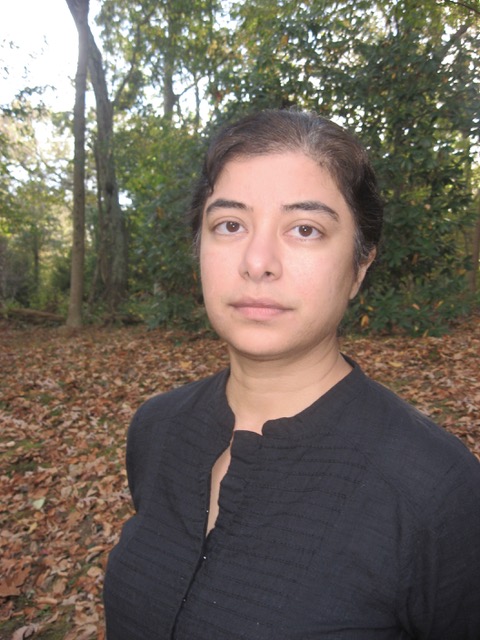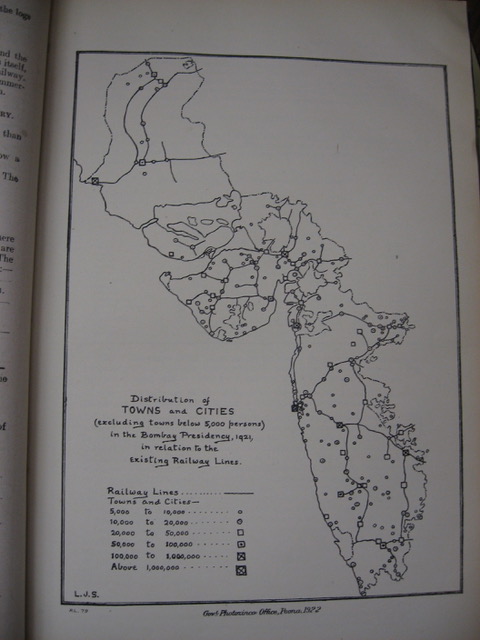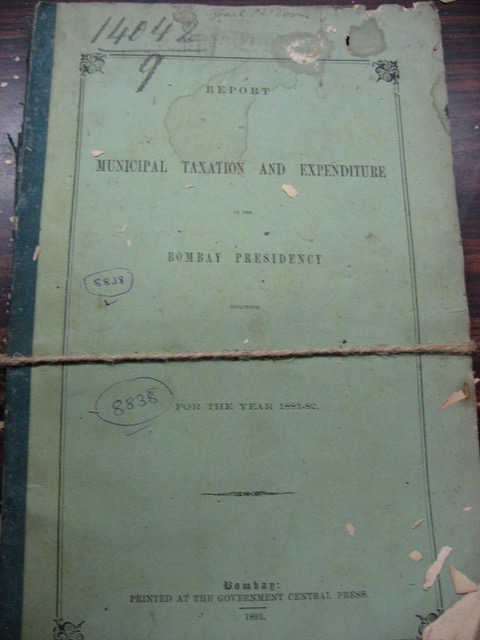By Sheetal Chhabria*, Connecticut College
The Archive Box is a series featuring global urban historians reflecting on their archival experience, and on the practical and theoretical challenges they faced while working with a variety of archives in different cities across the world.

From the colonial genealogy of Bombay’s persistent “slum problem” recounted in her award-winning book, self-described “archive nerd” Sheetal Chhabria invites us to read archives critically, helps us identify the spatial and historical tropes associated with the South Asian city and countryside, and warns us against the pitfalls of writing global histories without being rooted somewhere.
My book, Making the Modern Slum: The Power of Capital in Colonial Bombay, traces the history of the emergence of the “slum” as a category of stigmatization in colonial Bombay, and locates it in broader histories of colonialism and capitalism in South Asia. It was the result of my obsession with inequality, which had followed me ever since I was in medical school. Reading Mike Davis’ Planet of Slums—among other work—inspired me to understand why the slum problem was so persistent in Bombay.
I am admittedly a little bit of an archive nerd, and I believe historians should immerse themselves in archival work. Some of my fondest memories are being in Bombay or London looking at colonial records. I would have dreams at night about traveling in these cities in the past, as that was all I had been reading. That is a positive thing, you should be immersed so much in the sources that they produce a world for you. Then you may step back, and ask yourself what that world was, what you learned from it, and how you might historicize it.

In my approach to archives, I learned from David Ludden’s quip that historians should have a “voracious appetite for sources.” By that, he means that everything counts, not just conventional archives. An example of this may be an image of Mughal emperors I had in mind while working on the book, trying to understand how the logic of poverty relief changed from the eighteenth to the twentieth centuries. It is said that emperor Akbar initiated the tradition of weighing himself on a scale, and the gold equivalent of his weight would be given to the poor. There are a number of images and paintings illustrating this tradition.

These archival sources, like the rest of them, do not tell us the past, but mediate a reality for us. What does such an image tell us about how poverty relief changed over time in the subcontinent? In fact, by the late nineteenth century, a debate emerges among colonial officials as to whether the municipality should be doing poor relief at all, and wondering what to do about famine victims. If you took the British colonial archives and maps at face value, you would be missing a great deal. They should be read as documents meant to legitimize a regime. If one is not critical about archives, one falls into the tropes of those who wrote these archives. The majority of my sources are from official archives, but I attempted to read them critically, from the periphery.
Aside from Maharashtra state archives and Bombay municipal records, I also used native language biographies of the city. I found this tiny little book, something akin to a Lonely Planet guide from the time, for people who wanted to visit Bombay. By the early twentiethcentury, the city had become a character. The city—this abstract idea—was becoming what you were coming to visit, rather than its people.

Nevertheless, just as we read critically colonial archives, I believe it is important to not reify the “vernacular archive.” In an article I wrote titled “The Aboriginal Alibi: Governing Dispossession in Colonial Bombay”, I highlighted how some “vernacular” histories of Bombay all derived from earlier colonial sources. In the 1860s, there is a Marathi biography of the city which actually deploys the tropes of an older colonial anthropology of Bombay from 1835. The perpetuation of this trope leads us to believe that a vernacular source is truer to the lived experience than a colonial source. Rather than the tensions between vernacular and colonial, I was more interested in the tension between on the one hand those colonial andnative elites who wanted to turn the city into a place for revenue collection and commerce, and on the other the large majority of workers and migrants that shaped Bombay differently.
The question of tropes around urban development is always fodder in my mind, as I ask myself why certain representations of space become both so powerful and so contested in colonial India. The concern with the city in India is a relatively new one, as Gyan Prakash argued in a 2002 article on the “urban turn” in South Asian social sciences. The East India Company and the British Crown settled India primarily as an agrarian colony, with people stationed all across India to collect revenue. For long it was thought India was de-urbanized and peasantized, so the urban perspective was in the background. Tropes surrounding the tensions between the urban and the rural are at the heart of modernism broadly, and at the heart of India’s nationalist project.
What we call “city space” is always associated with modernity, whereas all the rest is traditional. If you showed a map of Bombay to an urban planner, they would tell you certain parts of Bombay are more urban than others, and such qualifications would map onto caste separation. Low-caste areas would be seen as “not-fully-urban”, not city-like. This is closely related to my next project on caste, which explores how the racialization of labor functions at the same time as the racialization of space. The internally-differentiated city comes to index a specific racialization of labor, in order to make it invisible.

With regards to research in global history, I wrestle with the location of this putative “global.” The project surrounding my book began as a global history, and was about how the story of Bombay’s growth was very similar to the North Atlantic urbanization trajectory, in particular with regards to the racialization of urban migrants and informal economies. Eventually, I became skeptical towards some global history approaches, as you may fall into normative accounts, and lose a sense of difference—of rootedness. Nevertheless, I do also think about the limits of such an approach, the way in which certain spaces are narrated as different, and have an alterity that over-determines them. I was writing against this pitfall, all the while wanting this book to be specifically about South Asia and about Bombay. I believe you can derive things about global urban history in it, but it is not directly there—on purpose. This extends to my approach to archives: I believe that if you position yourself as a “global historian”, it is harder to root yourself somewhere, in a place, and see the global from that location. A view from nowhere does not exist.
*as told to Ayan Meer.
Sheetal Chhabria (Ph.D. Columbia University) is a historian of South Asia with interests in the global histories of capitalism, urban studies, and the production of poverty and inequality. Her first book, Making the Modern Slum: the Power of Capital in Colonial Bombay (University of Washington Press 2019, Global South Asia Series), shows how the wellbeing of the city–rather than of its people–became an increasingly urgent goal of government, positioning agrarian distress, famished migrants, and the laboring poor as threats to be contained or excluded. Other publications have analyzed the politics of indigeneity, colonial knowledge, and the production of the economy as social scientific fact. Her current research entails analyzing the imbrications of caste and capital in the subcontinent’s long history and the failures of decolonization.
